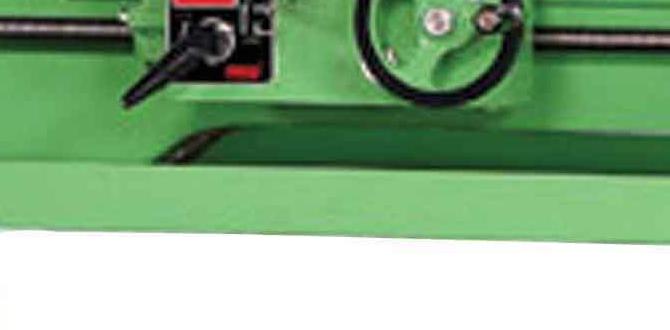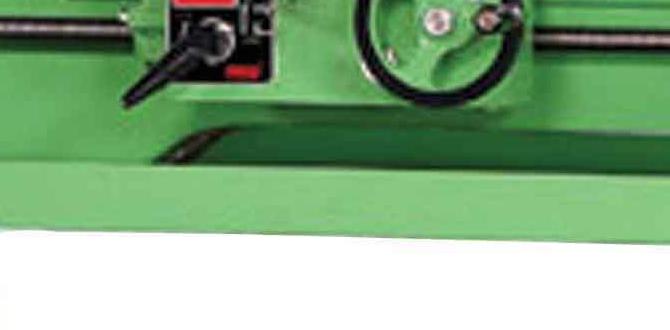Wood lathe duplicator system plans are an invaluable resource for woodworkers seeking to achieve remarkable consistency and efficiency in their projects. Whether you’re a seasoned craftsman looking to mass-produce identical turned components or a hobbyist aiming for perfect symmetry in decorative pieces, a duplicator system can dramatically simplify the process and elevate your woodworking capabilities. These plans provide the blueprint for building or adapting a tool that essentially “copies” a master workpiece, allowing you to replicate its shape with minimal effort.
The Power of Replication: Understanding Wood Lathe Duplicators
At its core, a wood lathe duplicator system works by using a sensing mechanism that follows the contours of a master spindle. This sensing mechanism is directly linked to a cutting tool, which then carves an identical shape into a “blank” workpiece mounted on the lathe. The beauty of these systems lies in their ability to remove much of the guesswork and freehand skill traditionally required for producing multiple identical turned items. Imagine creating a set of chair legs, balusters for a staircase, or even a collection of matching decorative bowls. Without a duplicator, achieving perfect uniformity across several pieces can be a tedious and often frustrating endeavor, demanding a high level of skill and meticulous attention to detail for each individual piece.
There are several types of wood lathe duplicator systems, each with its own approach to the replication process. Some are purely mechanical, relying on direct physical contact between the follower and the master. Others incorporate more advanced technologies, such as optical sensors or even digital feedback loops. The complexity of the plan you choose will depend on your budget, available tools, and desired level of precision. However, even the simplest mechanical designs can offer significant improvements in output and consistency.
Benefits of Utilizing Wood Lathe Duplicator System Plans
Embracing a wood lathe duplicator system, especially one built from detailed plans, unlocks a multitude of benefits for woodworkers of all levels.
Enhanced Consistency and Uniformity
This is arguably the most significant advantage. When creating multiple identical turnings, achieving perfect symmetry can be incredibly challenging, especially when relying solely on freehand turning. Minor variations in tool pressure, sweep of the hand, or even the grain of the wood can lead to noticeable differences between pieces. A duplicator system, when set up correctly, ensures that each replica is a mirror image of the master. This is crucial for projects where parts need to fit together perfectly or where visual harmony is paramount.
Increased Speed and Efficiency
The time saved by using a duplicator is substantial. Instead of meticulously shaping each piece individually, you can set up the master and blank, make a few passes with the duplicator, and achieve a near-finished product. This dramatically speeds up production, allowing you to complete projects faster or take on larger orders with greater economic viability. For small businesses or individuals selling their turned items, this increased efficiency can be a game-changer, directly impacting profitability.
Reduced Skill Barrier for Complex Shapes
While turning itself requires skill, replicating intricate or complex shapes repeatedly can be particularly demanding. A duplicator system simplifies this by allowing you to focus on creating one perfect master. The system then handles the faithful reproduction, making it accessible for woodworkers who might not yet possess the advanced freehand skills required for such tasks. This can be a fantastic learning tool, allowing users to understand form and proportion through the creation of masters that are then replicated.
Minimizing Material Waste
When you’re confident in your ability to achieve consistent results, you’re likely to approach your material preparation with more precision. This can lead to less trial and error and, consequently, less waste of valuable lumber. A duplicator ensures that the time and effort put into preparing the blank are more likely to result in a successful turning.
Navigating Wood Lathe Duplicator System Plans: What to Look For
When searching for or evaluating wood lathe duplicator system plans, several key features and considerations will help you find the right fit for your needs.
Type of Duplication Mechanism
Plans might detail systems that use a stylus that rides a master, a pivoting cutting tool, or even photo-electric sensors. Consider which approach best suits your existing tools and your comfort level with different mechanisms. Simple mechanical systems are often easier to build and maintain.
Ease of Construction and Material Requirements
Are the plans suitable for a beginner with basic tools, or do they require advanced machining capabilities? Look for plans that clearly list the materials needed, from lumber for the frame to specific hardware like bearings, guide rods, and cutting tools. Read reviews or look for build logs from others who have used the plans if possible.
Adjustability and Versatility
A good set of plans will offer some degree of adjustability. Can the system accommodate different lengths and diameters of workpieces? Is it easy to switch between a master and a blank? The ability to fine-tune the cutting depth and the tracking mechanism will also contribute to the system’s effectiveness.
Compatibility with Your Lathe
Ensure the plans are designed with your specific lathe model or a general range of lathe sizes in mind. The mounting system and the overall footprint of the duplicator should be compatible with your lathe’s bed and overall sturdy foundation.
Embarking on Your Duplicator Project
Finding high-quality wood lathe duplicator system plans is the first step towards effortless creation. Many woodworking forums, enthusiast websites, and even some specialized woodworking publications offer detailed blueprints, ranging from free DIY designs to professionally drafted schematics for purchase. Take your time to research different options, compare their features, and consider what will best integrate with your existing workshop setup.
Building your own wood lathe duplicator system can be a rewarding project in itself, offering a deeper understanding of woodworking mechanics. Once assembled and calibrated, you might find yourself wondering how you ever managed without it. The ability to produce perfectly matched turned components with speed and ease opens up a world of new project possibilities and significantly enhances the overall woodworking experience. With the right plans and a dedication to careful construction, you can unlock a new level of efficiency and precision in your lathe work.



